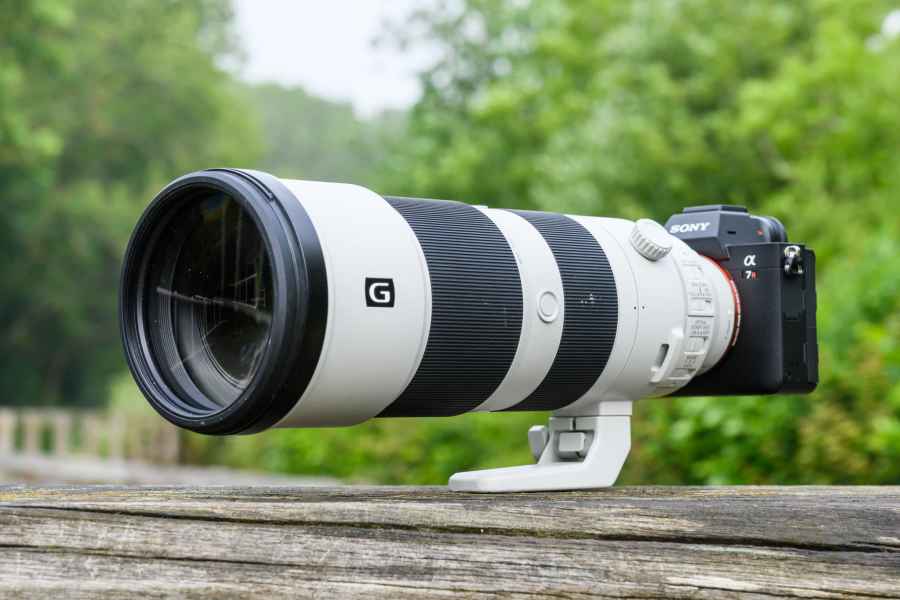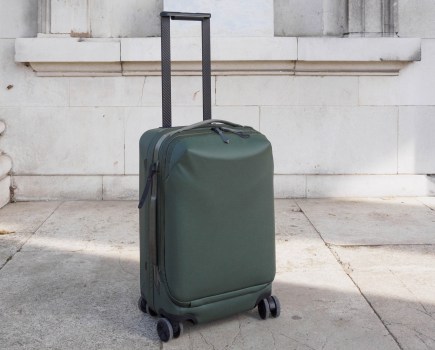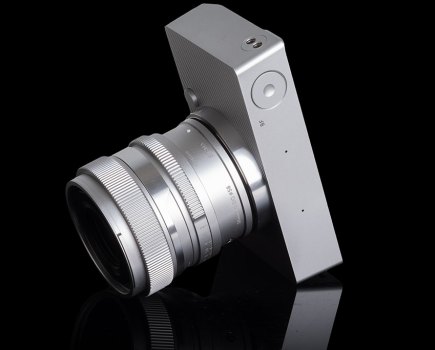The last couple of years has seen Sony make a conscious effort to deliver what so many professionals have been calling for, which is longer and faster telephoto lenses deserving of their fabulous line-up of full-frame mirrorless cameras. Does this lens make it onto the list of the best Sony lenses?
The launch of the FE 400mm f2.8 OSS G Master in 2018 and FE 600mm f4 G Master in 2019 has addressed many professionals’ concerns that there haven’t been the right lenses they need to persuade them to switch systems. Combine these important lenses with the mind-blowing capabilities of cameras like the A7R IV and Sony A9 II and it’s no wonder so many pro photographers now swear by Sony’s full-frame system.
Providing lenses of such calibre is all well and good, but unless you win the lottery or you’re a pro who makes a healthy living from photography, it’s unlikely you’ll ever own a lens that has a five-figure price tag. So what is a good option if you’re a Sony A7-series user who wants to buy a long, but sensibly priced telephoto zoom?
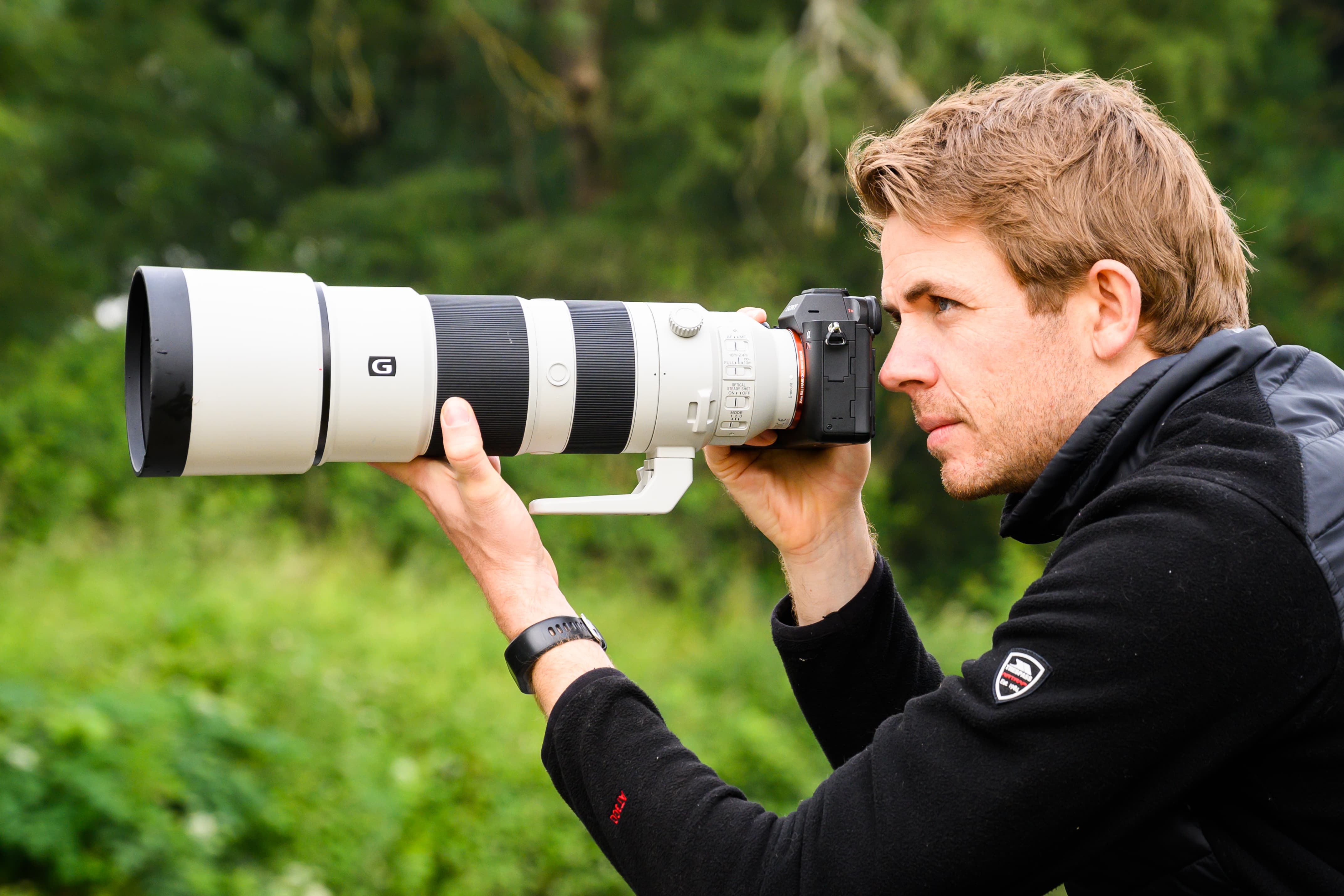
Though not small or light, it is possible to handhold the lens for short bursts of shooting
Enter the FE 200-600mm F5.6-6.3 G OSS – an intriguing lens that fulfills the reach required by many aviation, sports and wildlife photographers at a staggering price for less than you’d spend on Sony’s FE 100-400mm f4.5-5.6 OSS G Master (£2299) or the much shorter FE 70-200mm f2.8 G Master (£2149).
To put it in context, it’s a sixth of the cost of Sony’s FE 400mm f2.8 OSS G Master lens and £10,300 cheaper than Sony’s FE 600mm f4 G Master lens that it was launched alongside last summer.

Sony A7R IV, Sony FE 200-600mm F5.6-6.3 G OSS @600mm, 1/3200sec at f/6.3, ISO 1600
I’d hoped to make it along to several sporting and airshow events while the lens was in my possession, but with the coronavirus pandemic putting a stop to that, plan B had to be instigated. This involved using the lens over a two week period at Bough Beech nature reserve in Kent – a haven for many species of waders and wildfowl, and should I be lucky enough to see them, rare albino squirrels and migrating Osprey.
Sony FE 200-600mm F5.6-6.3 G OSS – First impressions
Having never seen the lens in the flesh before I was in for a shock when it arrived. Unpacking it soon revealed the lens is much shorter than the box suggests and at 318mm in length, it’s only 30mm longer than Sigma’s 150-600mm F5-6.3 DG OS HSM Sport.
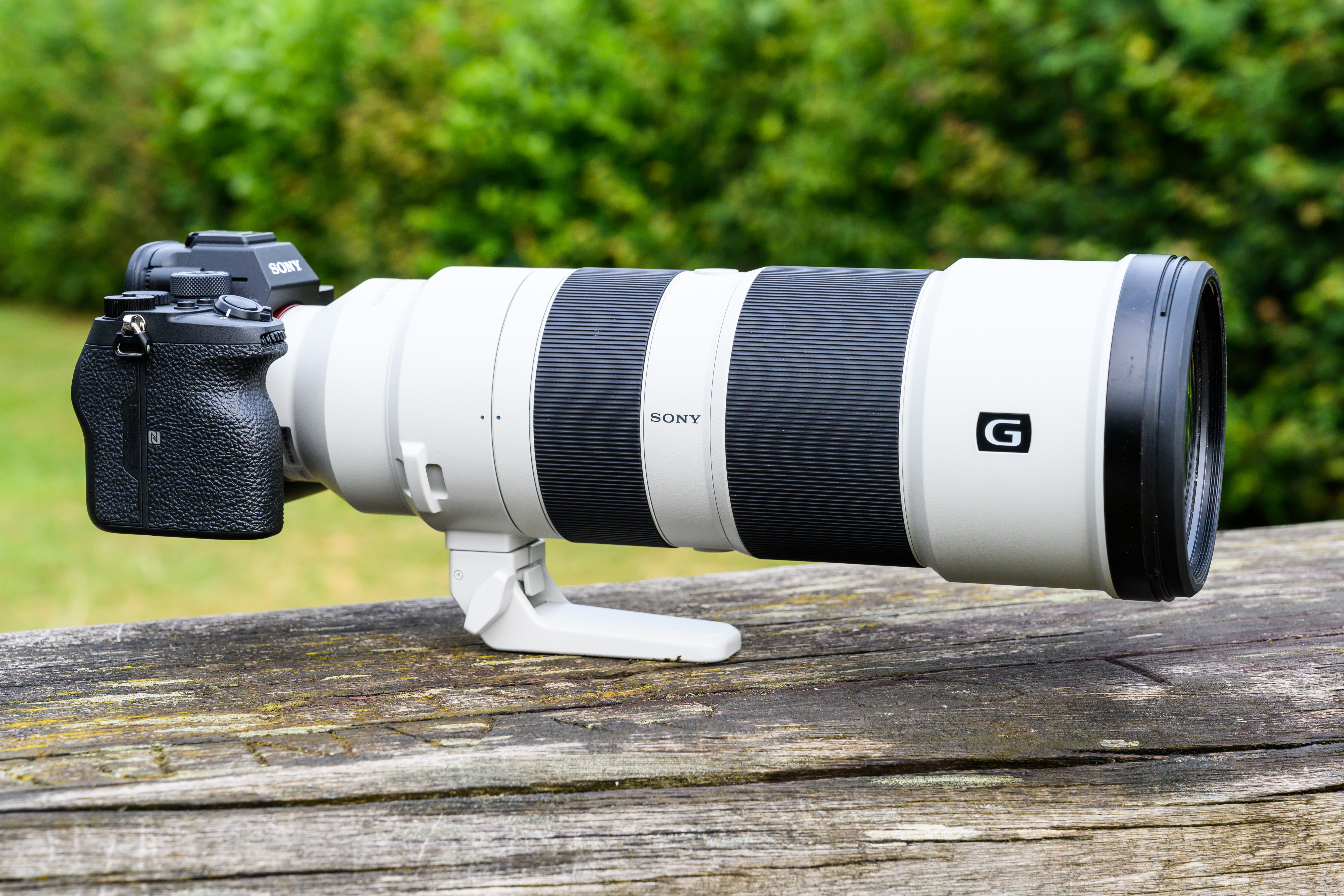
The lens was paired with the Sony A7R IV to conduct this review
Unlike some third party zoom offerings from Tamron and Sigma that aren’t available in E-mount and call for an adapter to be used with Sony’s mirrorless cameras, I was hopeful this native lens would be in a different league in terms of its focus performance and not exhibit the same hesitancy I’ve experienced in the past when pairing third-party lenses with Sony A7-series cameras via various adapters.
A close inspection of the lens reveals it has all the trademarks of premium zoom, including a white heat shield coating, dust and moisture resistant design, three customisable AF On/Focus hold buttons mid-way down the barrel and optical steady shot (OSS) in-lens stabilisation. The latter works in tandem with 5-axis in-body image stabilisation (IBIS) offered by compatible A7-series cameras, with the lens handling pitch and yaw rotation and IBIS correcting X/Y and roll movement.
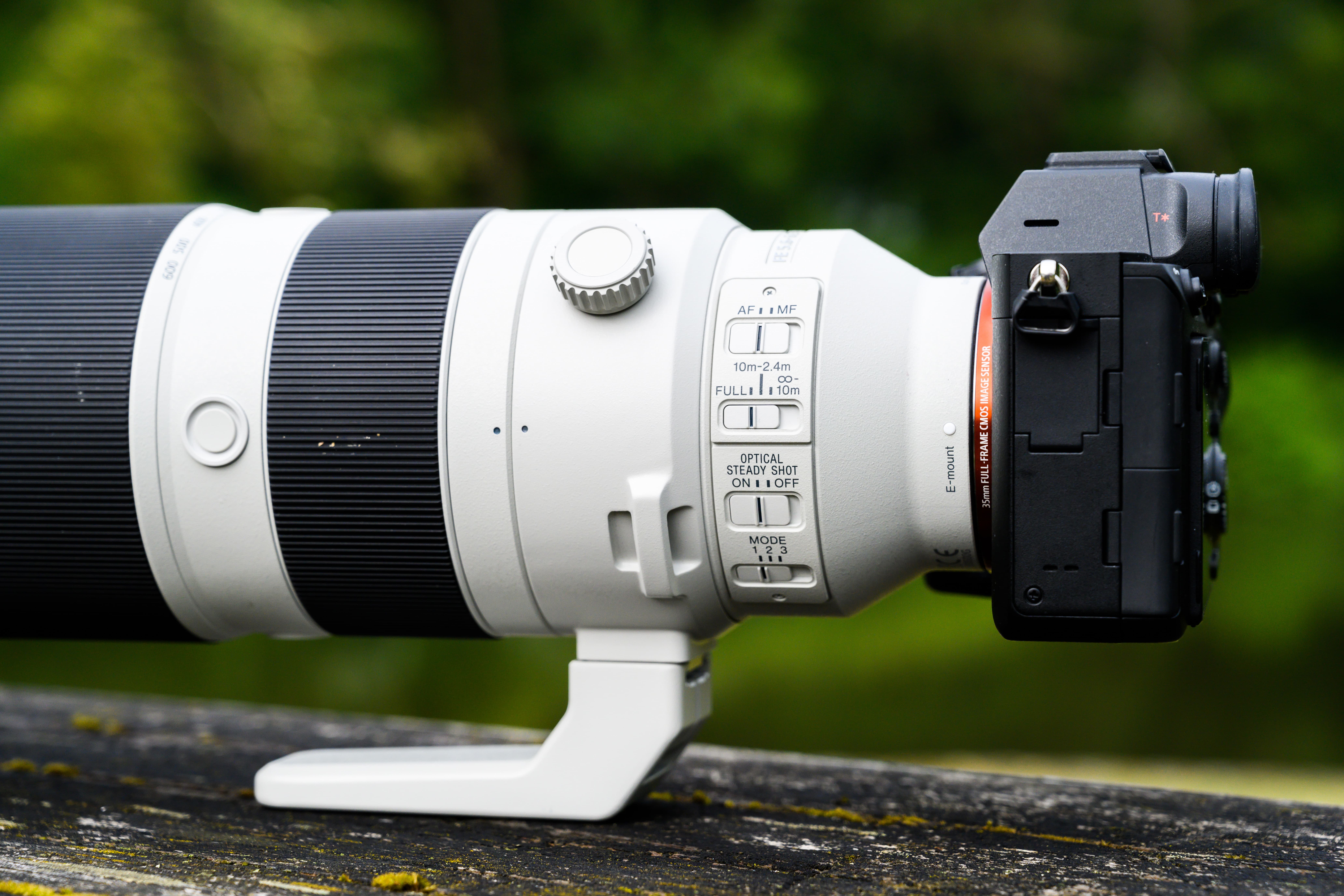
The lens features a white heat shield coating just like Sony’s FE 70-200mm f2.8 G Master (£2149), FE 70-200mm f4 G OSS (£1149) and FE 100-400mm f4.5-5.6 OSS G Master (£2299)
Without getting too bogged down in all the technical details, a quick glance at the spec sheet reveals the optical arrangement is made up of no fewer than 24 elements in 17 groups. It has an 11-blade circular aperture and relies on Sony’s Direct Drive Super Sonic Wave Motor (DDSSM) to shift the heavy focus group.
Prior to heading out and using the lens in anger I couldn’t resist pairing it up with the Sony A7R IV to get an idea of whether handheld shooting was going to be feasible. Though by no means lightweight at 2,115g, it’s not as heavy as you’d expect for a lens that reaches 600mm and it is possible to handhold it for short periods when you want the freedom and flexibility to track moving subjects.
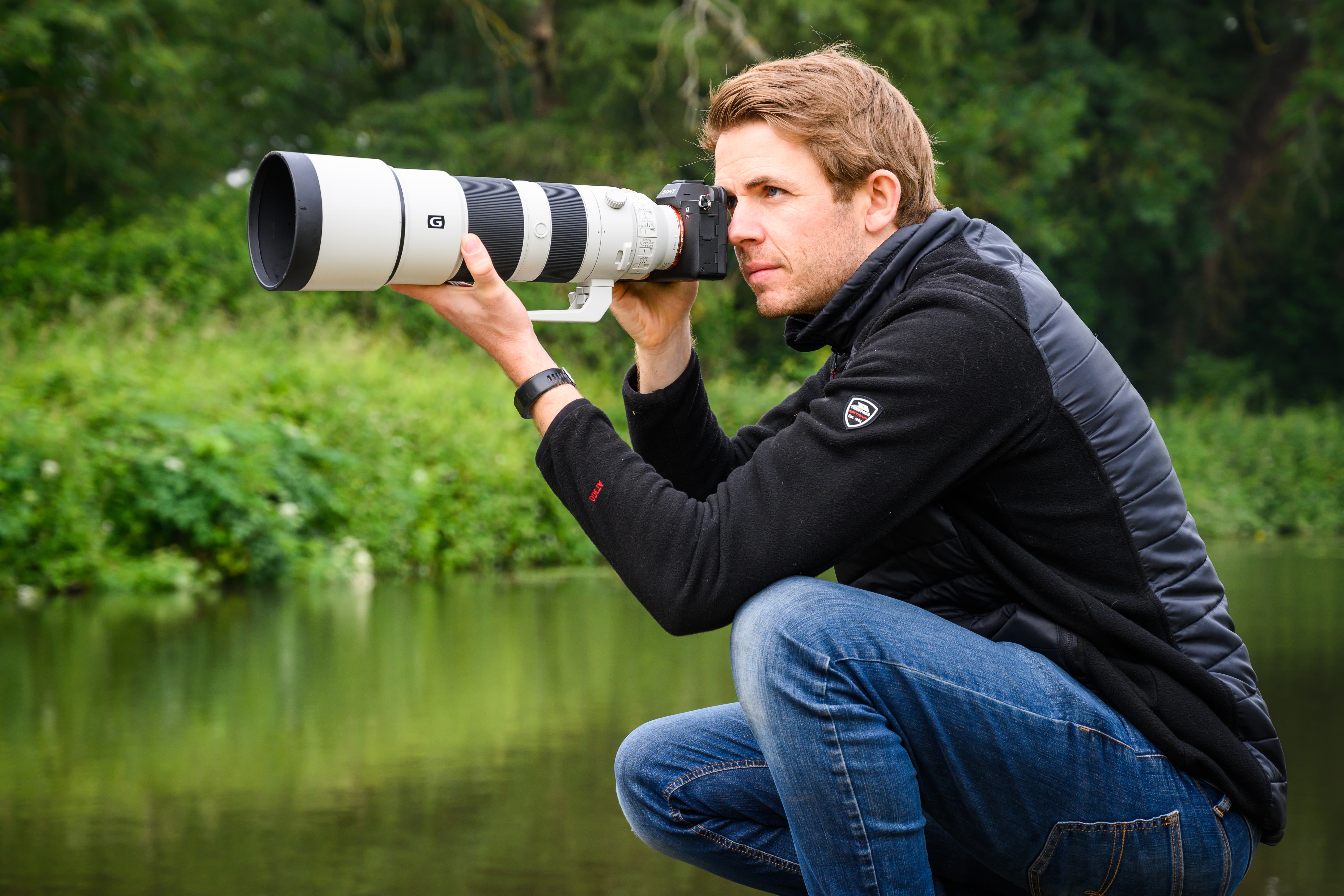
The author putting the Sony FE 200-600mm F5.6-6.3 G OSS through its paces
If you tend to shoot for long periods from a fixed point, such as from a wildlife hide or edge of a racetrack, supporting it on a rigid monopod is recommended. Comparing it to lenses like Sigma’s 150-600mm F5-6.3 DG OS HSM Sport and 60-600mm F4.5-6.3 DG OS HSM Sport, which weigh 745g and 585g more respectively, reiterates how well Sony have done to keep the weight of the lens under 2.5kg.
Better still, with an internal zoom mechanism the length of the lens remains constant and doesn’t extend like Sony’s FE 100-400mm f4.5-5.6 OSS G Master (£2299). Not only does this mean the distance between the front element and subject doesn’t change when zooming, it ensures the balance of the lens remains consistent at all times, whatever the focal length is set to. Alas, you don’t get a zoom lock to prevent zoom creep as it’s simply not needed.
All things considered, first impressions were extremely positive. Next came the true test of finding out what it was like to use in the field.
Sony FE 200-600mm F5.6-6.3 G OSS – Familiarisation
I’m not one for lugging unnecessary kit about on my wildlife outings. With most wildlife encounters being sporadic, and having missed many opportunities in the past due to my camera being squirrelled away in a backpack, I now like to carry my camera by my side ready to shoot at a moments notice. The tripod mount on the lens is particularly good for this. It’s long enough that it allows you to grab it securely and makes for a comfortable way of carrying camera and lens about in the field.

The long tripod mount lets you grab and carry the lens securely
The tripod collar doesn’t click into place at 90 degrees like some when rotated, but you do get dots on the barrel to help align it precisely when it’s supported on a monopod and you want to quickly switch shooting orientation without upsetting the balance. The tripod mount has a lock to prevent accidental removal too and supports both 1/4in and 3/8in sockets.
An added convenience of working with large tele zooms is having a long, wide-diameter hood. While its main purpose is to shield the lens from rays of light that can cause flare, glare and reduce image contrast, it also provides a way of resting our camera setup nose down on level ground between spells of shooting. The large plastic hood that’s supplied has a thick rubber tip to protect it when it’s rested down, but unlike some telephoto lenses have hoods that secure by push fit and a tightening screw, this lens’s hood uses a bayonet type connection.
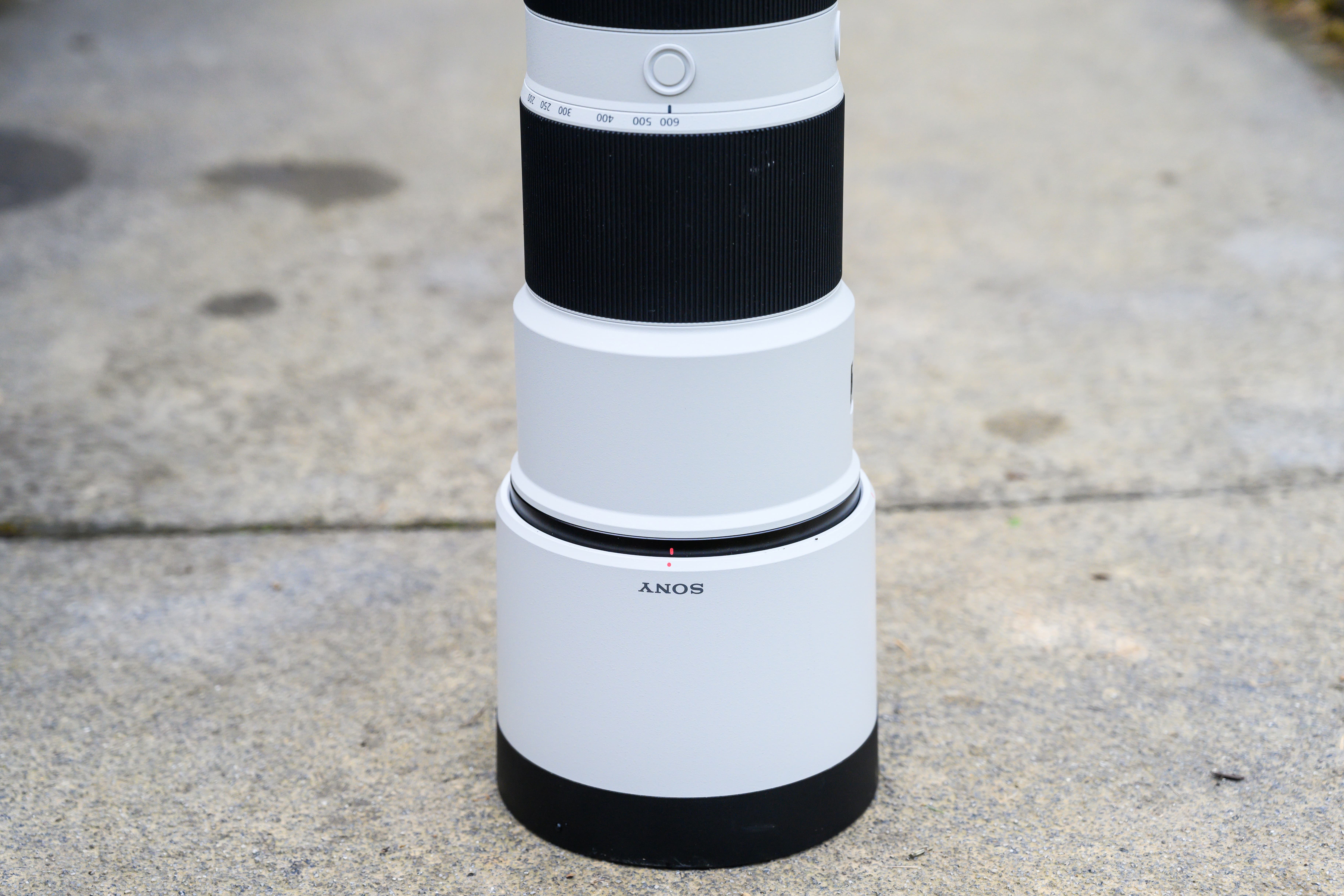
Find a level area and the lens can be rested down upright on its rubberised hood
Taking up my position on the causeway, overlooking a popular spot where wildfowl frequently takeoff gave me a good chance to get familiar with the four switches on the barrel. Below the standard AF/MF switch is the focus-range limiter switch that can be set to Full, 10m-2.4m or infinity to 10m.
With many of my early shots being taken of birds at a distance greater than 10m from the lens, I found the infinity to 10m setting invaluable for fast focusing and preventing the lens searching for focus over its entire focus range when lock-on was inadvertently lost. The switch beneath the focus range limiter is used to control optical steady shot (OSS), but unless you find yourself locking the camera off on a tripod, just as I did for my image quality tests, you’ll rarely want to turn this off.
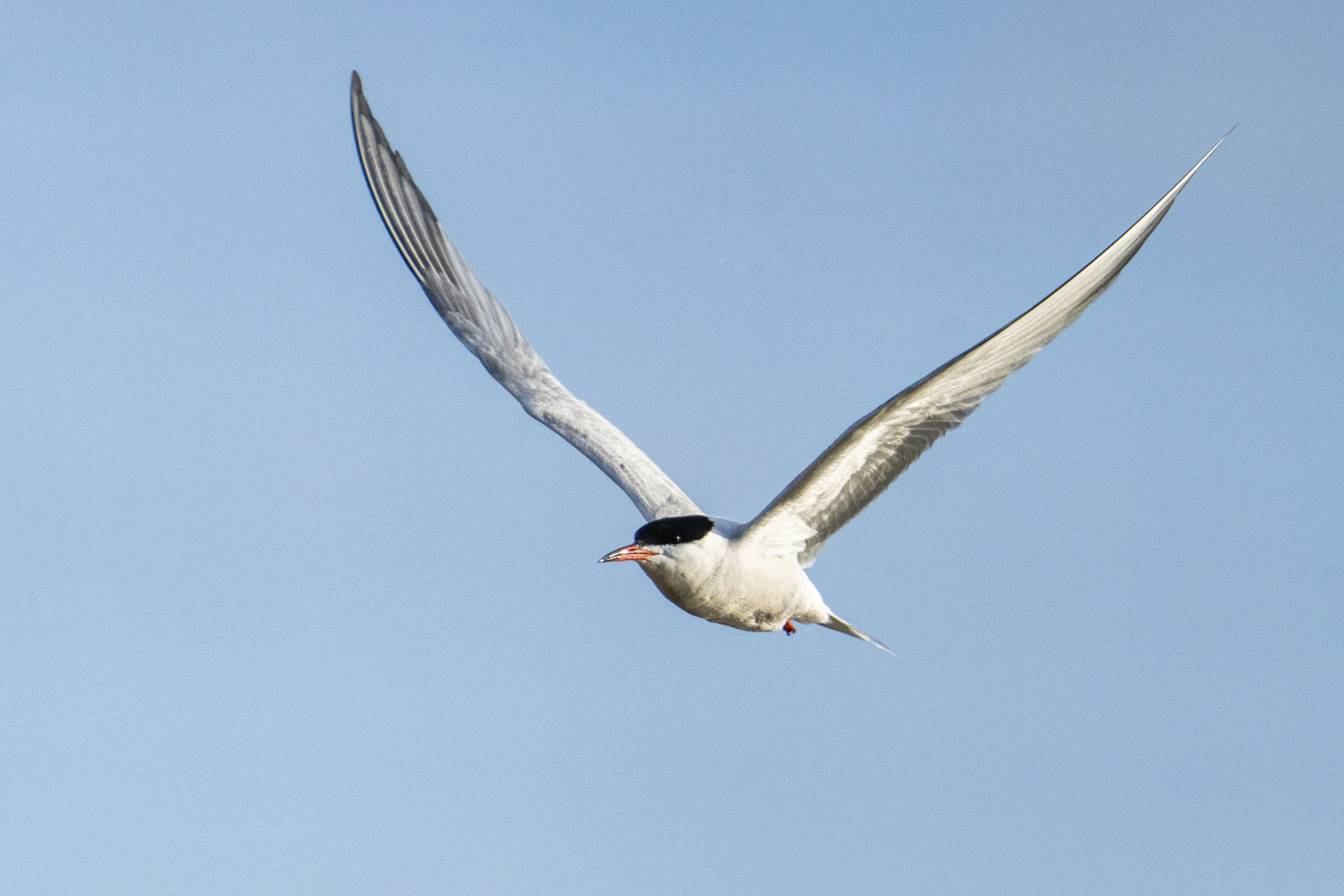
Sony A7R IV, Sony FE 200-600mm F5.6-6.3 G OSS @600mm, 1/8000sec at f/6.3, ISO 1600
Initially I started out with the shake compensation switch set to Mode 1, which is intended for general camera shake, however I soon switched over to Mode 3, which is intended for photographing fast and irregular moving subjects and worked especially well for bird photography. The central Mode 2 setting attempts to correct for shake attributed to panning, which is most likely to be used by motorsport and aviation photographers.
The effectiveness of stabilisation is best observed by extending the lens to 600mm before flicking the OSS switch on the barrel on and off a few times. The improved stability when it’s active is clear to see. With a solid handheld technique users shouldn’t experience difficultly shooting pin-sharp shots of static subjects at 600mm using shutter speeds around 1/100sec and I managed a few sharp frames at 1/80sec and 1/50sec.

Sony A7R IV, Sony FE 200-600mm F5.6-6.3 G OSS @600mm, 1/1600sec at f/6.3, ISO 1600
Sony FE 200-600mm F5.6-6.3 G OSS – Teleconverter compatibility
If you’d like to get even closer to your subject than 600mm allows, the lens can be turned into a longer zoom by coupling a teleconverter between the camera body and lens. Pairing it with Sony’s 1.4x teleconveter for E-mount (£479) turns it into an impressive 280-840mm F8-9 lens, whereas if it’s used with Sony’s 2x teleconverter for E-mount (£499) it gives users a whopping 400-1200mm range with a variable aperture of F11-13.
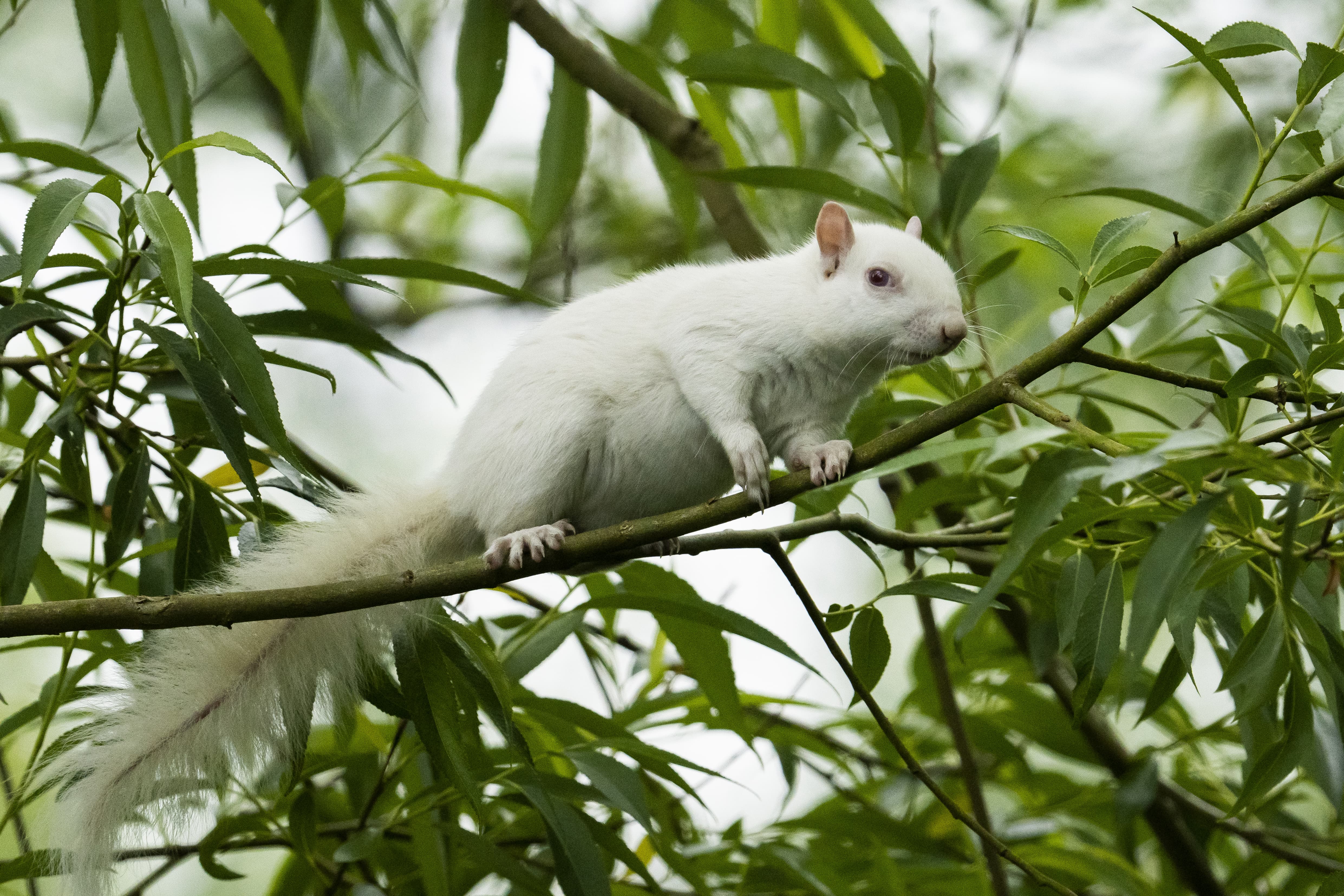
Sony A7R IV, Sony FE 200-600mm F5.6-6.3 G OSS @660mm (APS-C/Super 35mm mode), 1/2500sec at f/6.3, ISO 2500
The alternative way to get extra reach without any additional outlay or light loss is to take advantage of the APS-C/Super 35mm mode offered by A7-series cameras. This turns it into a 300-900mm F5.6-6.3 equivalent albeit at reduced resolution (26MP in the case of the Sony A7R IV).
Sony FE 200-600mm F5.6-6.3 G OSS – In use
Unfortunately I couldn’t lay my hands on a Sony A9 or A9 II at the time of testing so I settled on the next best option; the Sony A7R IV, which borrows a lot from the A9’s incredibly responsive focusing system. The A7R IV’s 10fps burst rate isn’t the match made in heaven for shooting lightening fast subjects that the A9 and A9 II’s 20fps burst rate is, still I knew what I’d get with the A7R IV was the option to engage its APS-C/Super 35mm mode and turn the lens into a mighty 300-900mm equivalent with no drop in maximum aperture while maintaining a higher 26MP resolution than the 10.6MP output you get using the A9 or A9 II in its crop mode.
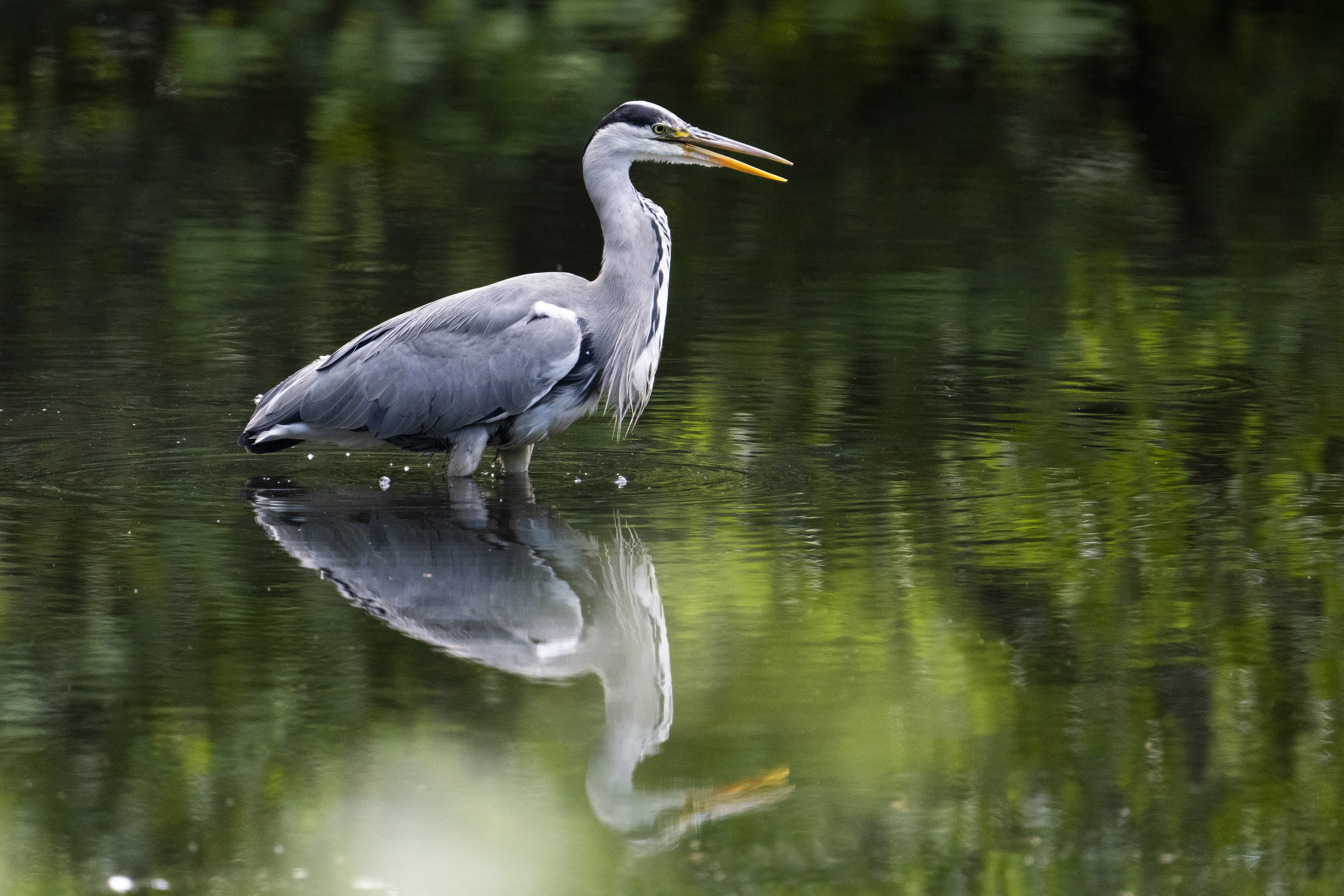
Sony A7R IV, Sony FE 200-600mm F5.6-6.3 G OSS @864mm (APS-C/Super 35mm mode), 1/800sec at f/6.3, ISO 2000
With Sony unable to supply a teleconverter, I found myself using the A7R IV’s crop mode more than I thought and the extra reach allowed me to fill the frame with far off subjects and give my images greater impact straight out of camera when 600mm wasn’t long enough.
One thing the lens can’t be claimed for being is particularly fast and its variable aperture of f/5.6-6.3 is where more expensive telephoto primes have their advantage. The aperture can be set to f/5.6 between 200-300mm and beyond this point it’s f/6.3 all the way up to 600mm.

A side view showing the full length with the lens hood attached
The difference in aperture between this zoom and other telephoto lenses with faster maximum apertures is indubitably its Achilles’ heel. It forced me to use higher ISO settings than I would have liked in overcast conditions and on brighter days I found I was still pushing up to ISO 800 and ISO 1600 to achieve shutter speeds above 1/2000th second to freeze birds in flight.
Thankfully, the A7R IV’s sensor delivers outstanding results at high ISO so I didn’t hesitate to push up to ISO 3200 and ISO 6400 when required. In gloomy lighting conditions I had little option but to push the sensitivity higher (up to ISO 25,600 at times) to freeze the erratic movements of small birds, which ultimately led to nosier images and extra noise reduction work in post processing. Testing the lens in challenging conditions confirmed what I initially thought going into this review, which is that it asks a lot from the camera’s sensor in low-light and it’s best suited to outdoor situations where light is plentiful.
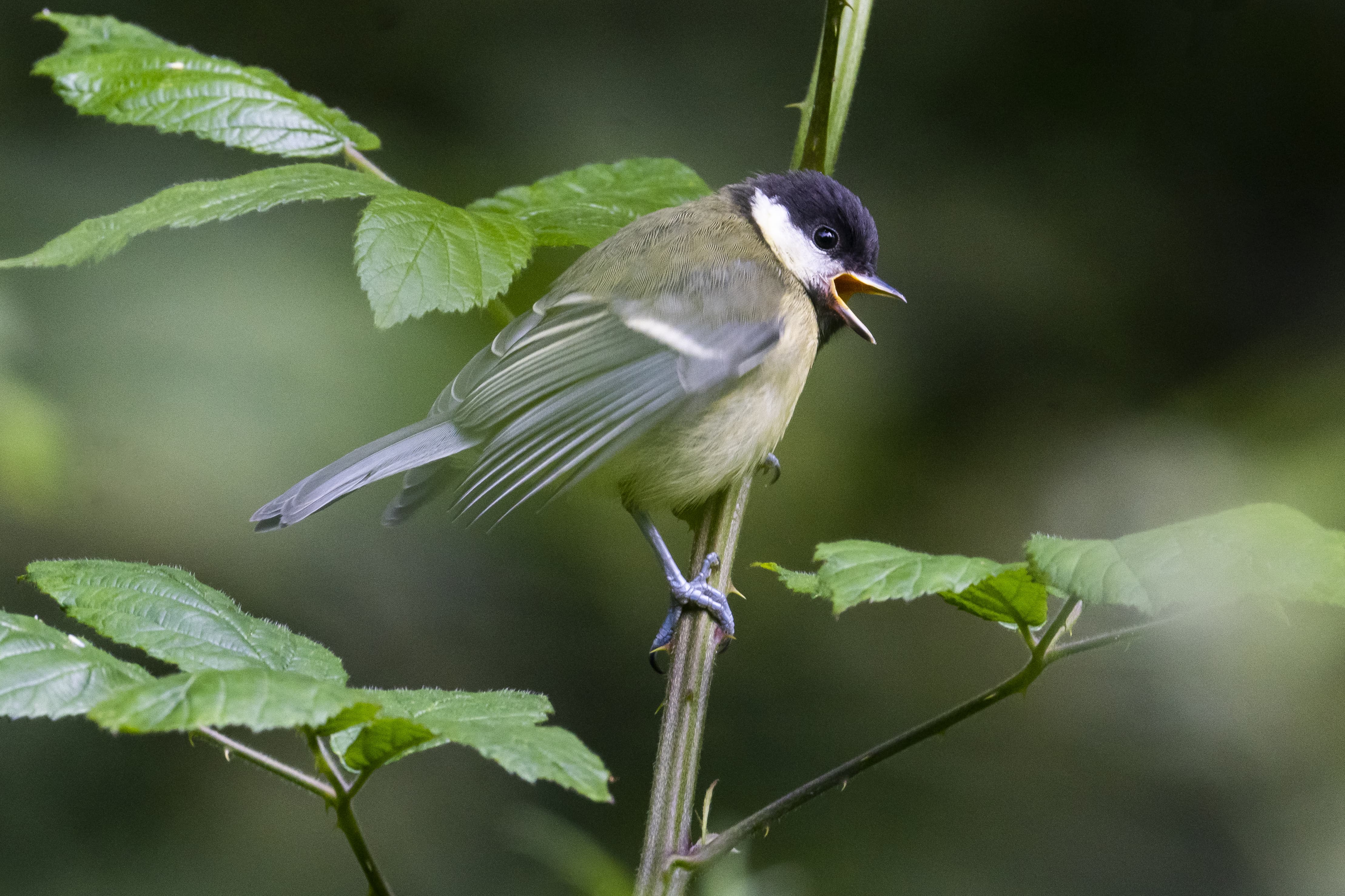
Sony A7R IV, Sony FE 200-600mm F5.6-6.3 G OSS @600mm, 1/250sec at f/9, ISO 1600
One of the advantages of using a telephoto zoom instead of a telephoto prime for shooting fast and erratic subjects like small birds is that they give you a chance to find the subject in the frame at the widest point in the zoom range before increasing the focal length with a short sharp twist of the zoom ring to enlarge it in the frame.
It’s this technique that was used to capture the opening image to this review. The short throw of the zoom, which operates under a quarter turn, is great for extending and retracting it from one end to the other suddenly. The zoom ring has slightly more resistance than the focus ring, however both operate smoothly and are well damped.
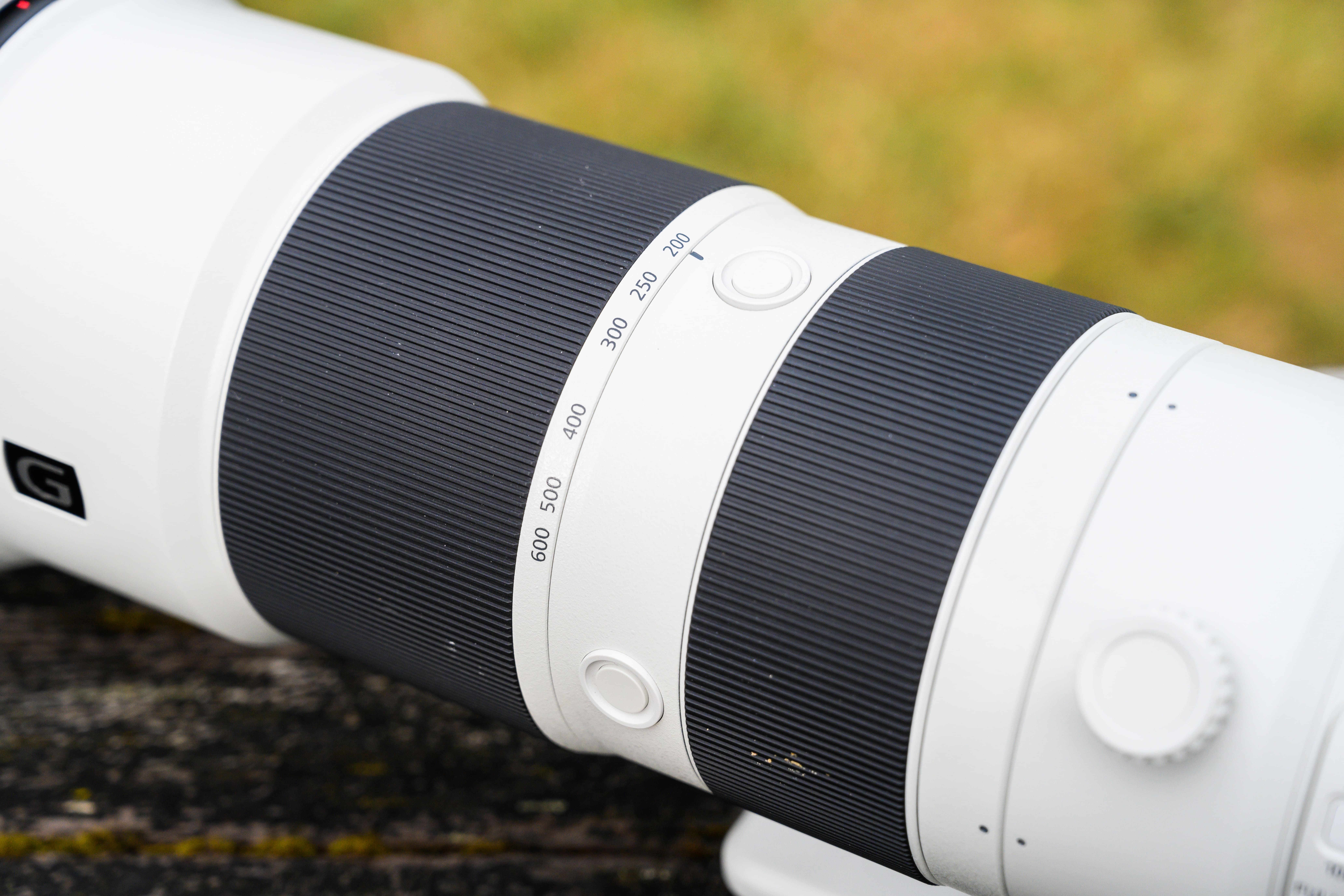
The zoom ring operates across its range in a quarter turn making it quick and easy to get from 200mm to 600mm and vice versa
My impression of the way the lens goes about its business of focusing is that it’s up there with Sony’s finest G-Master lenses. Granted I was using it with the A7R IV that has an incredibly responsive AF system, but still, I was impressed by how it latched onto distant subjects with pinpoint accuracy. The speed at which it kept up with birds in flight in continuous AF (AF-C) focus mode with the focus area set to Zone exceeded my expectations and some of my best shots were captured by setting the A7R IV’s AF tracking sensitivity to 5 (Responsive).
There’s no memory recall function like you get on some high-end telephoto lenses and I felt the positioning of the AF On/Focus hold buttons could do with being closer to the front where it feels natural to support the lens. These points aside, I couldn’t fault how fast and silently the lens acquired focus and it is obvious Sony hasn’t cut any corners in this regard.
Sony FE 200-600mm F5.6-6.3 G OSS – Image quality
So just how sharp is it? Carrying out tests across its zoom and aperture range revealed it’s sharper towards the centre of the frame than at the edge, even when stopped down. The sharpness in the centre when used wide-open at f/5.6 and f/6.3 is nothing short of outstanding and there’s only a very slight improvement to be had by stopping down to f/8.
Diffraction does affect fine detail at f/16 and beyond, so users should ideally use the lens between its maximum aperture and f/11 to achieve optimum sharpness. The maximum aperture isn’t particularly wide, however the fall off in focus at long focal lengths creates a highly satisfying depth to shots that makes subjects pop from their surroundings.
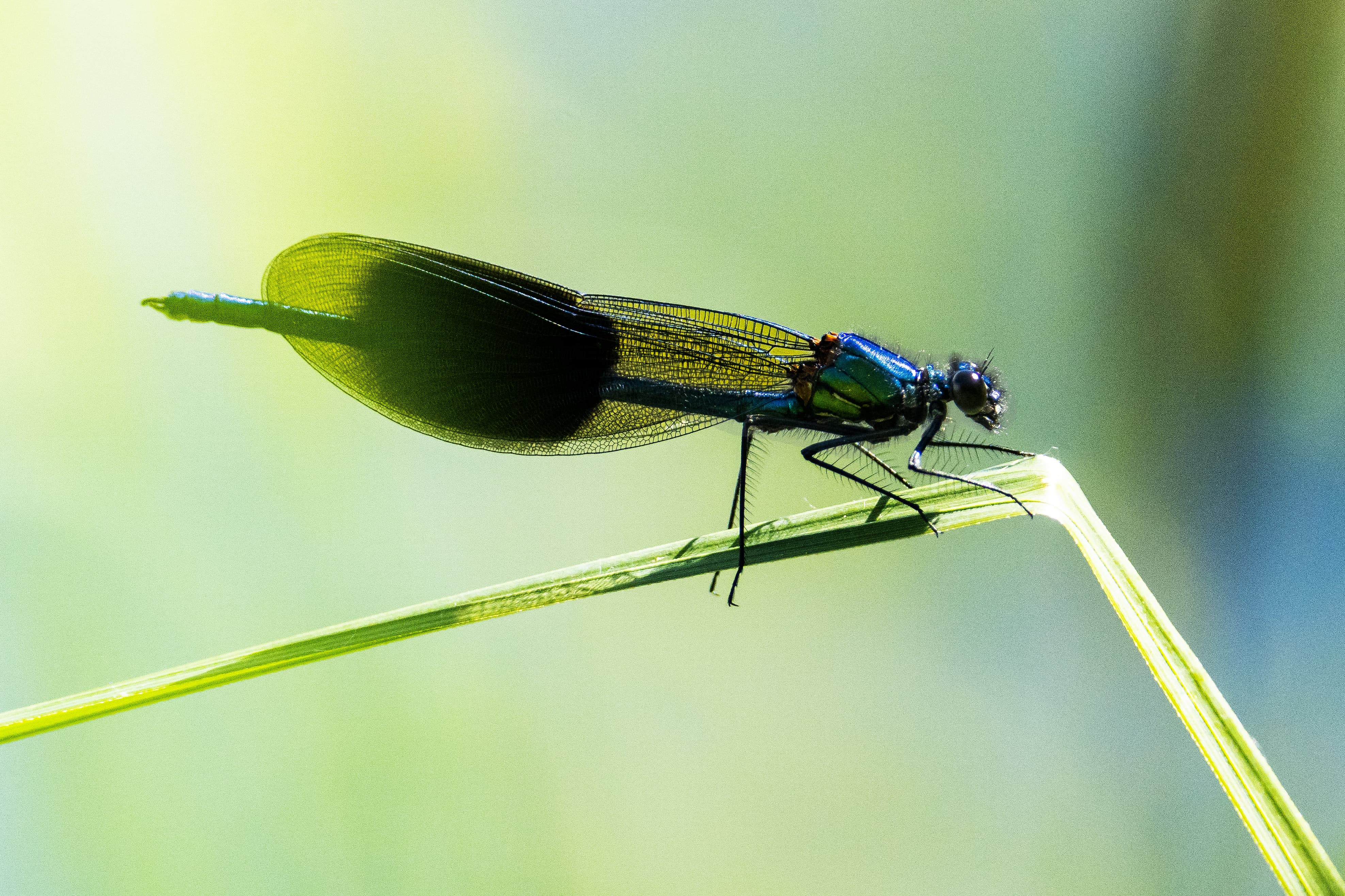
Sony A7R IV, Sony FE 200-600mm F5.6-6.3 G OSS @600mm, 1/2500sec at f/6.3, ISO 1600
Cat’s eye bokeh is observed in the corners of shots taken at the lens’s maximum aperture, but the 11-blade aperture diaphragm does a fine job of keeping out of focus specular highlights circular at smaller apertures. Users will find that chromatic aberration is dealt with effectively by the built-in lens profile and though mild pincushion distortion is exhibited through the zoom range, it can be quickly remedied by enabling lens profile corrections in Adobe Camera Raw.
It’s a similar story for the negligible vignetting the lens displays at its maximum aperture. Enable the lens profile and corner shading immediately vanishes.
Sony FE 200-600mm F5.6-6.3 G OSS – Final thoughts
Sony has pulled it out the bag with the FE 200-600mm F5.6-6.3 G OSS. Not only have they made a phenomenally impressive telephoto zoom that’ll whet the appetite of wildlife, aviation and sports photographers around the world, it’s offered at a price (£1,699) that represents great bang for your buck. Some will argue that its size isn’t practical and it’s a bit of a beast to carry.
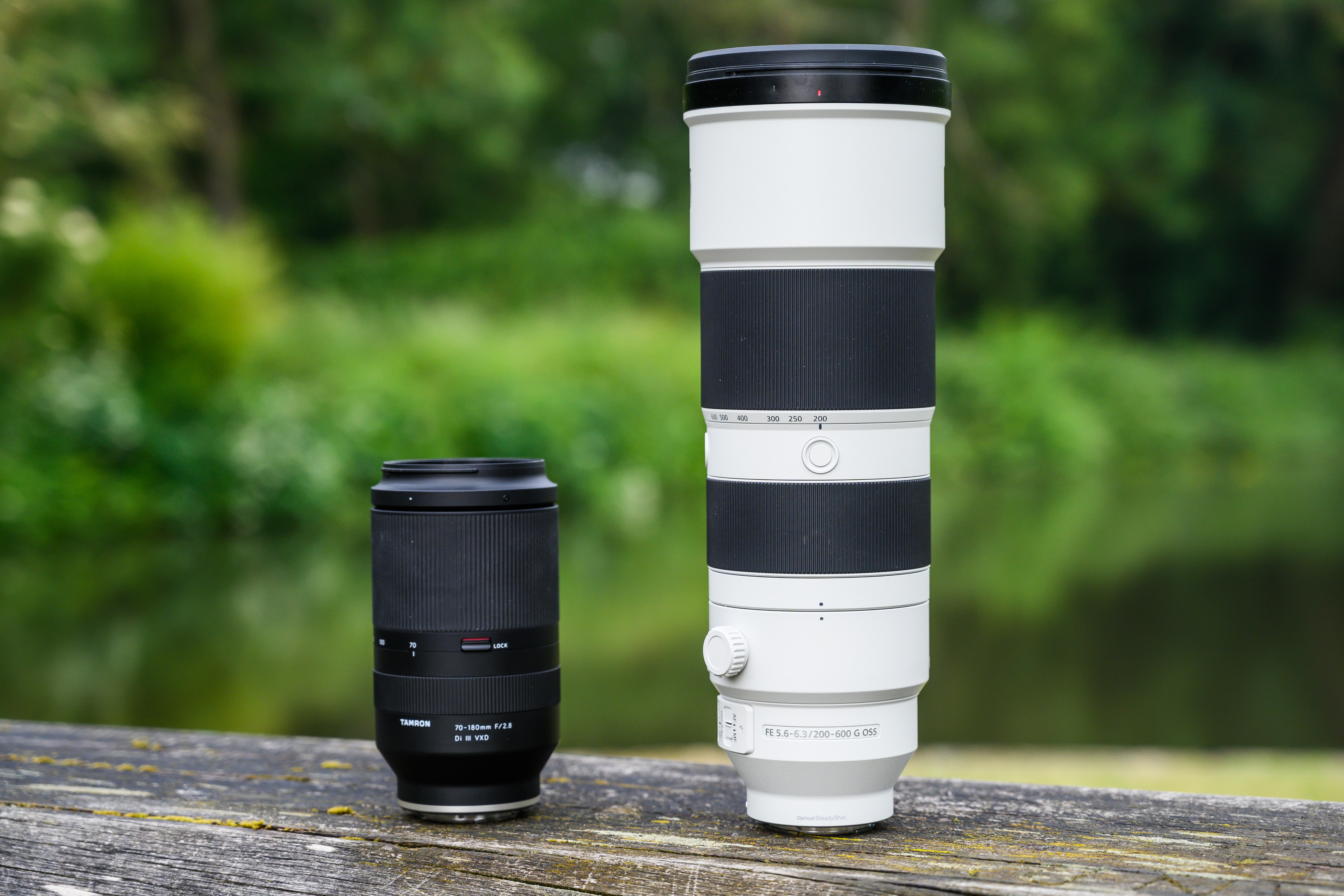
Here we see the Sony FE 200-600mm F5.6-6.3 G OSS (right) lined up alongside the Tamron 70-180mm F2.8 Di III VXD (left)
Though I can’t deny it takes up a lot of space when travelling and isn’t conducive to long spells of handheld shooting, these are minor concerns I’d tolerate for the quality of images it returns and its versatility.
Not only does it deliver a strong, consistent optical performance, it combines this with fast, quiet focusing and a first-class build quality. From an ease-of-use perspective it makes it quick to find small and erratic subjects in the frame, which isn’t so easy with a long telephoto prime.
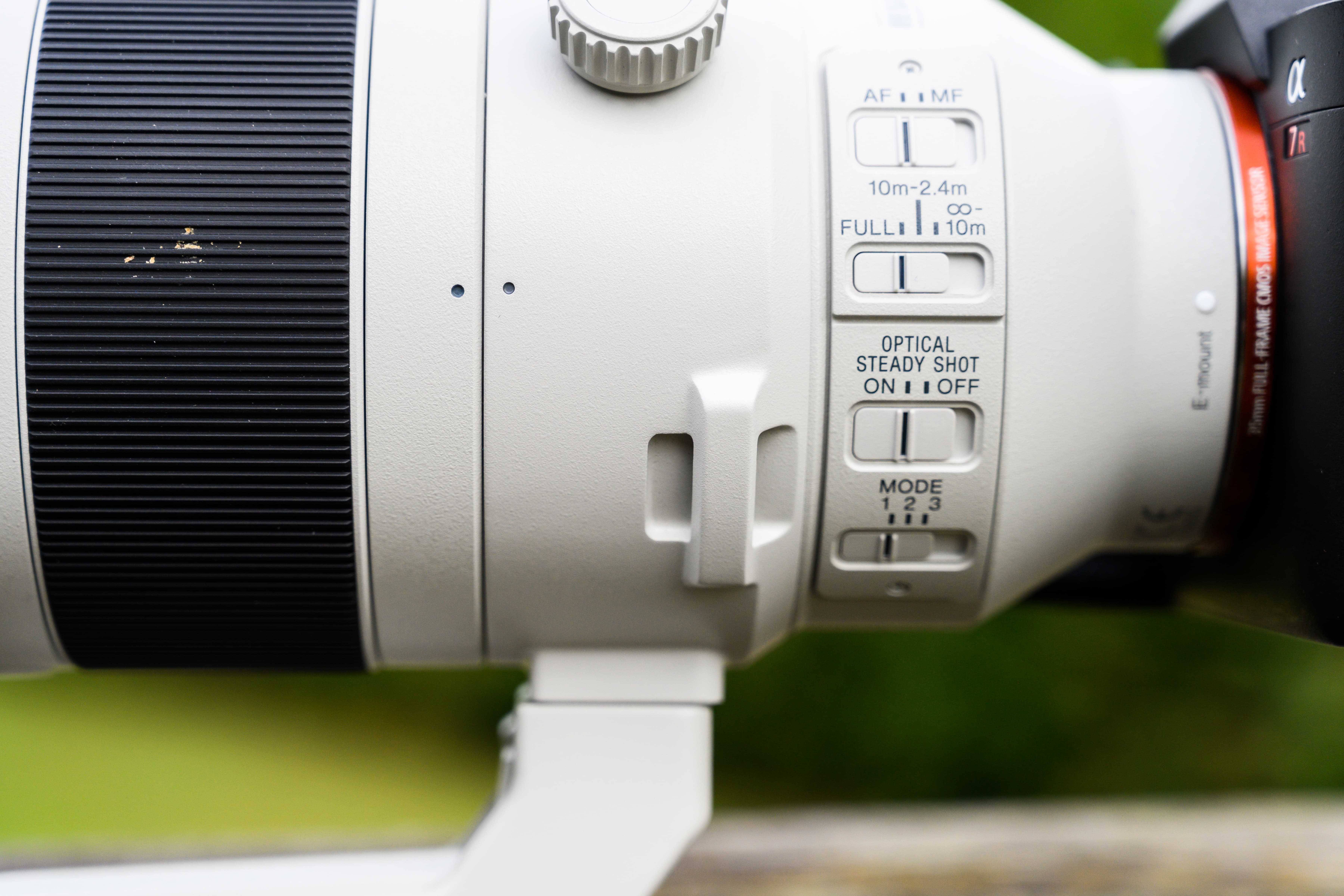
From top to bottom, the AF/MF switch, focus distance limit switch, OSS switch and OSS mode switch
The main caveat is its fairly slow variable maximum aperture that calls for it to be used in favorable lighting conditions if you’d like to uphold fast shutter speeds without having to push the sensitivity too high. A smaller and lighter alternative that some may prefer is Sony’s FE 100-400mm F4.5-5.6 GM with a 1.4x telconverter (equivalent to 140-560mm), however I’d be tempted to choose the FE 200-600mm F5.6-6.3 G OSS ahead of this combination for the extra reach at the long end and the huge £1070 saving that can be made.
There are very few full-frame telephoto zooms that cover as wide range, perform as well and represent as good value for money as this lens. It’s a zoom I expect will be in high demand as photographers return to capturing motorsport and aviation images at various events, travel on safari or take a more local wildlife trip. It may even entice some photographers to buy into Sony’s well established full-frame mirrorless system.

The Sony FE 200-600mm F5.6-6.3 G OSS is a lot of lens for the money. It’s available to hire from companies such as Hireacamera.com
If you’re a Sony user sitting on the fence undecided, don’t overlook the opportunity to try before you buy. For as little as £58 it’s possible to hire the lens for a weekend (£162 for two weeks hire) to find out if it’s the right lens for you. If your experience is anything like mine, you’ll find it hard handing it back when the loan comes to an end.

